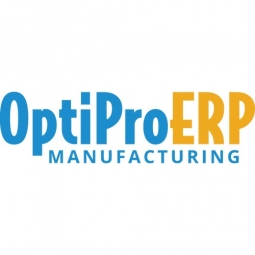Technology Category
- Functional Applications - Inventory Management Systems
- Functional Applications - Manufacturing Execution Systems (MES)
Applicable Industries
- Electronics
- Healthcare & Hospitals
Applicable Functions
- Quality Assurance
- Warehouse & Inventory Management
Use Cases
- Inventory Management
- Picking, Sorting & Positioning
Services
- System Integration
- Testing & Certification
About The Customer
CapsoVision is a fast-growing company in the medical device manufacturing industry, specializing in the development of medical capsules for the detection of various types of cancer, including colon, esophagus, and stomach cancer. The company is aiming to become a leader in the small bowel capsule market and is looking to expand into new markets. To support its growth and manage its operations effectively, CapsoVision needed a robust and efficient system that could handle its financial, inventory, and manufacturing needs while also meeting the stringent compliance requirements of the medical device manufacturing industry.
The Challenge
CapsoVision, a rapidly growing capsule camera company, was facing significant challenges in managing its business effectively. The company was using three different software products that were not providing the desired level of efficiency or remote work capabilities. The databases were unreliable and the company was struggling with financial efficiency. They were in need of a robust ERP system that could handle their financial and inventory management needs while also meeting the stringent compliance requirements of medical device manufacturing. However, the ERP systems they evaluated, including SAP and NetSuite, were prohibitively expensive.
The Solution
CapsoVision found their solution in OptiProERP, a system that offered the document management capabilities required by biotechnology and medical device manufacturers. OptiProERP was natively embedded on SAP Business One, which CapsoVision had been considering. The system provided the strong financial, inventory, and quality management capabilities that CapsoVision needed. It also offered remote capabilities for greater flexibility. OptiProERP met the FDA and CFR 21 validation requirements for quality control, which was a key factor in CapsoVision's decision to choose it. The system also had the ability to accurately reflect manufacturing costs, control inventory, and automate the company's processes.
Operational Impact
Quantitative Benefit

Case Study missing?
Start adding your own!
Register with your work email and create a new case study profile for your business.
Related Case Studies.

Case Study
Remote Temperature Monitoring of Perishable Goods Saves Money
RMONI was facing temperature monitoring challenges in a cold chain business. A cold chain must be established and maintained to ensure goods have been properly refrigerated during every step of the process, making temperature monitoring a critical business function. Manual registration practice can be very costly, labor intensive and prone to mistakes.

Case Study
Hospital Inventory Management
The hospital supply chain team is responsible for ensuring that the right medical supplies are readily available to clinicians when and where needed, and to do so in the most efficient manner possible. However, many of the systems and processes in use at the cancer center for supply chain management were not best suited to support these goals. Barcoding technology, a commonly used method for inventory management of medical supplies, is labor intensive, time consuming, does not provide real-time visibility into inventory levels and can be prone to error. Consequently, the lack of accurate and real-time visibility into inventory levels across multiple supply rooms in multiple hospital facilities creates additional inefficiency in the system causing over-ordering, hoarding, and wasted supplies. Other sources of waste and cost were also identified as candidates for improvement. Existing systems and processes did not provide adequate security for high-cost inventory within the hospital, which was another driver of cost. A lack of visibility into expiration dates for supplies resulted in supplies being wasted due to past expiry dates. Storage of supplies was also a key consideration given the location of the cancer center’s facilities in a dense urban setting, where space is always at a premium. In order to address the challenges outlined above, the hospital sought a solution that would provide real-time inventory information with high levels of accuracy, reduce the level of manual effort required and enable data driven decision making to ensure that the right supplies were readily available to clinicians in the right location at the right time.

Case Study
Gas Pipeline Monitoring System for Hospitals
This system integrator focuses on providing centralized gas pipeline monitoring systems for hospitals. The service they provide makes it possible for hospitals to reduce both maintenance and labor costs. Since hospitals may not have an existing network suitable for this type of system, GPRS communication provides an easy and ready-to-use solution for remote, distributed monitoring systems System Requirements - GPRS communication - Seamless connection with SCADA software - Simple, front-end control capability - Expandable I/O channels - Combine AI, DI, and DO channels

Case Study
Driving Digital Transformations for Vitro Diagnostic Medical Devices
Diagnostic devices play a vital role in helping to improve healthcare delivery. In fact, an estimated 60 percent of the world’s medical decisions are made with support from in vitrodiagnostics (IVD) solutions, such as those provided by Roche Diagnostics, an industry leader. As the demand for medical diagnostic services grows rapidly in hospitals and clinics across China, so does the market for IVD solutions. In addition, the typically high cost of these diagnostic devices means that comprehensive post-sales services are needed. Wanteed to improve three portions of thr IVD:1. Remotely monitor and manage IVD devices as fixed assets.2. Optimizing device availability with predictive maintenance.3. Recommending the best IVD solution for a customer’s needs.





